Nice weather, a substantial amount of basic material, a collection of experimental artifacts and a weed burner led to these objects. It boils down to the discovery that, sufficiently heated, acrylic plastic will deform and and fuse together, one item to another.
In this instance I had some acrylic cutouts for a project that wasn’t working out. I melted them together with the result that a draped effect emerged with an enrichment of colors and surfaces. Roughly three feet across.
This represents a free wheeling approach where a number of elements came together. The mish was so mashed that, in the interests of some uniformity, I gave it a single color. It’s interesting how the whole thing resembles welding in metal in that pieces can be tacked on and integrated through the judicious application of the flame.
The heat can bake the plastic somewhat like bread. There are some surfaces here that have assumed an alligatoring like something you might see at a bake shop.
An application of silver paint to unify the object. Roughly four feet high. Making allowances for structural and handling issues there is no real limit to how large such assemblages can be made.
Overall a rather humble piece with spiky appendages composed of ceramic items left over from another time. This melting approach allows for the incorporation of a variety of elements – in this case stuff that has a personal history.
A nice gooey example.
An aspect of this that I rather like is the presence of a certain subdued detail within a simple shape overall.
There’s a lot of room for more work to be done if not, necessarily, to be stored.

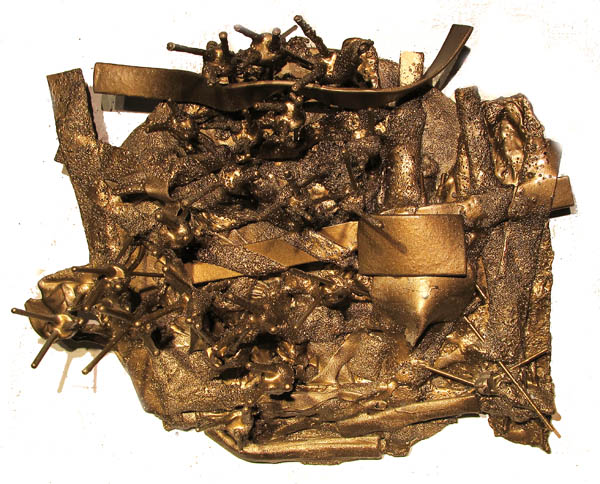
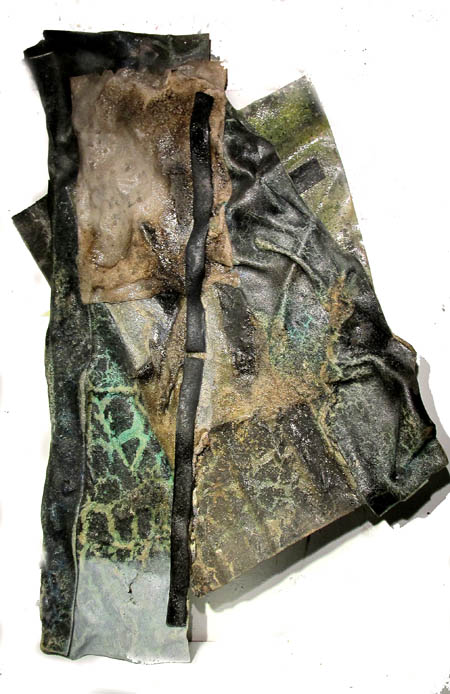

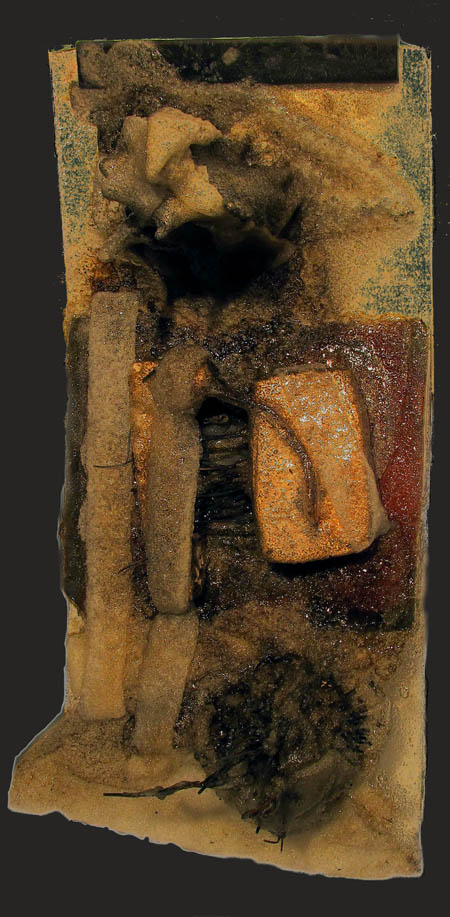
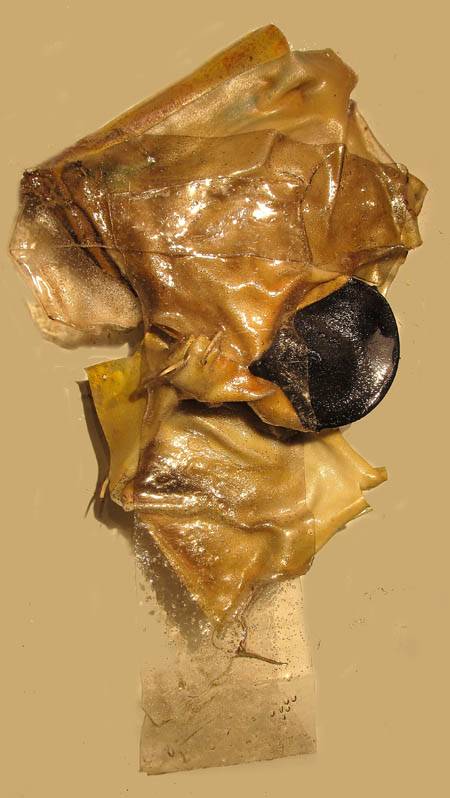
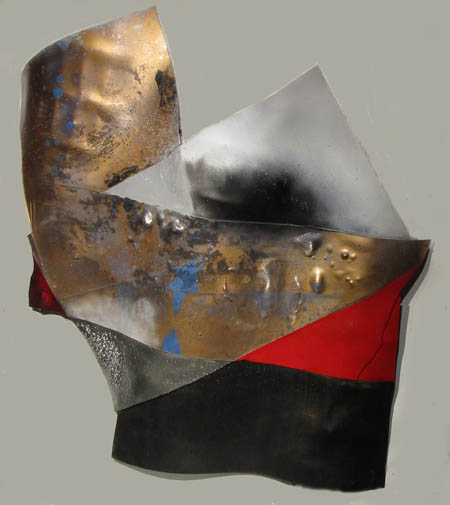

More of your playful work — I’m really liking it. Have you approached galleries with the idea of exhibiting? I know that that’s more work than the playful stuff, but this deserves to be seen.
I was particularly fascinated by the “welding”/metal look of the materials. It’s a combo of slumping, which is plastic/meltable/fluid stuff and the sheen and adherence that resembles metal. You’ve worked the two (or more) elements together well, and the painting (insofar as I’m naming it correctly) enhances the doubleness of the materials.
Can these stand alone? How might they be supported in an exhibiting fashion?
just nosy, you understand. You’ve done so much of this that it seems like it’s time to let it go out on its own.
Thanks for your response June – and I really mean it, coming as it does from such a thoughtful source.
This particular approach is, in aggregate, a kind of dream come true. It reminds me of elementary chemistry where one mixes things together, puts the vessel over a Bunsen burner and watches as a new compound appears.
I don’t know how things are in Portland, but in these parts galleries and venues are, for reasons of survival primarily, becoming glorified gift shops. But I may be letting myself off the hook when, instead, I should be looking to exhibit. For one thing some of these experiments may be covering new ground. If so, I might best do some demo-ing, and if not all that novel, then I would like to see how others are handling matters. For example, I would like nothing better than for you to find a cheap source of plastic and a propane torch – and then for you to do some things in a parallel fashion. The outcomes will be so utterly different I sure.
Jay,
Troels and I enjoyed looking at your pieces this morning. Troels, the geometer, likes your first piece the best. The alligatoring piece with its lovely green reminds me of something in a medieval castle. As one of the ‘personal object’, we detected a nail.
In the photos, the plastic pieces do look like metal. It must be the paint that gives them this metallic sheen.
Great pieces! Too bad that you don’t live in NYC or Los Angeles where galleries may be more interested in your sculptures.
Thank you Birgit and Troels:
Here I am this morning fighting a big case of the blahs and your comments have helped brighten things up.
Yes, it turns out that silver paint and the deformations of the plastic go very well together. A strong sense of presence results that can be habit forming and best kept under control. Overall the giving nature of the medium has opened up a lot of possibilities. Hopefully this winter will be brief so that I can get back out there and make more.
Jay,
I am glad that your do your sculptures – powerful in shape, texture, color – during the summer using outdoor ventilation. This weekend, an article about Ellsworth Kelly in the NYTimes talked about his lung issues due to exposure of organic fumes.
Birgit:
I’d have to retire to a factory building – in some big empty space – to do these in the winter.
Your admonition caused me to look in on Kelly and to find that he had done some things early in his career similar to some of my shut-in efforts of late. Knowing that he and others plowed and planted where I now glean will allow me to pursue certain issues of paint application with no concern for novelty.